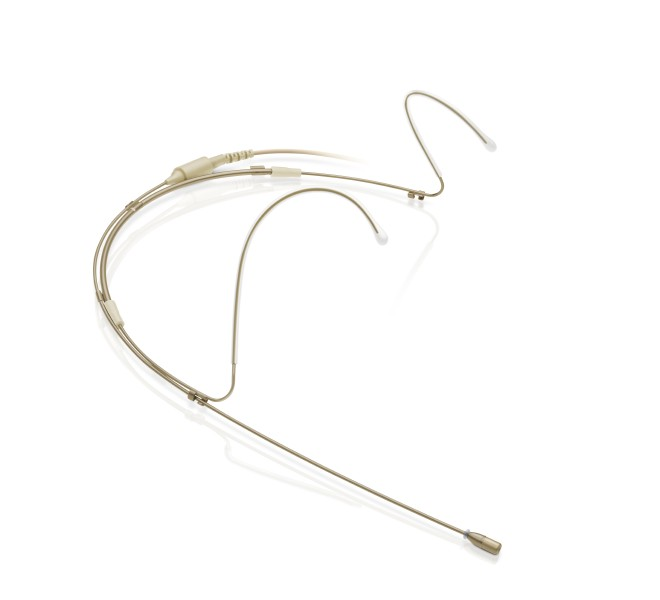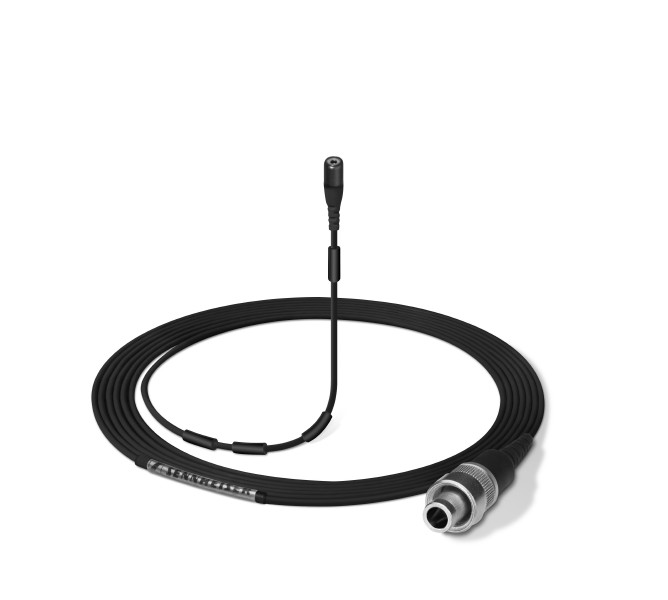How-To Presentation microphones 2: Head worn and Lavalier Microphones
15 July 2019

Headworn and lavalier microphones: A How-To Guide
July 16, 2019 – Have you ever wondered how the headband microphones of musical performers are attached in such a way that they don't slip even during the wildest dance? Or have you already taken part in a panel discussion and didn't know exactly how to attach the clip-on microphone to your clothes? And where is the pocket transmitter of wireless microphones best positioned? In part 2 of our series "Dos and Don'ts for the use of microphones in business and education", we have compiled the most important information on headset and lavalier microphones for you.
Headset Microphone: Tips for the Optimal Speech Position

Whether it's a TV show, lecture or panel discussion – the SL Headmic 1 is a particularly popular moderator microphone. With this headset microphone, you can decide whether you want to wear the microphone on the left or right side. There is a total of five clips on the neckband for use on both sides of the microphone. For the best possible comfort and fit, simply adjust the headband and microphone arm to your head size. Slide the microphone arm forward or backward so that the microphone is 2 to 3 cm from the corner of your mouth. The further away the microphone is from the optimal position, the less treble will be transmitted. The 7-gram light, but sturdy metal bracket guarantees maximum wearing comfort even during prolonged use.
Lavalier microphone: How to attach it

You probably know it from discussions on television or from the musical stage: a lavalier microphone like the MKE 1 is a small microphone that is normally clamped to the clothing in the chest area. This explains the name which refers to a specific shape of necklace. This positioning makes the lavalier microphone susceptible to noise when, for example, a speaker begins to nestle on his clothes out of nervousness, grazing the microphone with his sleeves. If you use a lavalier microphone, do not take it off your clothes and turn it into a handheld microphone. The audio quality would suffer because the distance to your mouth is no longer ideal. For actors and musical performers, lavalier microphones are often placed at the hairline so that they are not visible to the audience and the sound of the microphone is not affected by the performer's movements.
Pocket transmitters as a mobile power source for headband and lavalier microphones
Both head worn and lavalier microphones are connected to the bodypack transmitter for maximum freedom of movement. The clip allows you to attach the bodypack transmitter to clothing such as your waistband or belt. The bodypack transmitter should always be attached in such a way that the antenna is not covered in order to ensure full transmission power. Modern pocket transmitters such as the SL Bodypack DW are equipped with an easily accessible mute switch. This allows the bodypack transmitter to be muted if required.
Conclusion
Headband and lavalier microphones give you maximum freedom of movement on stage or podium for presentations. During a presentation, wireless microphones give your hands free to gesticulate or operate wireless presentation equipment. The unobtrusive design of the microphones keeps the audience's focus on you. Head worn and lavalier microphones are ideal for untrained speakers because their fixed positioning means they are always correctly aligned with the speaker's mouth. However, compared to other corporate and educational microphones, they are a little more susceptible to interference from the speaker's careless movements. Would you like to learn more about speaker microphones? Discover our portfolio of audio solutions for presentations!
Blowing into the microphone is not a function test! Dos and Don'ts in handling microphones
We all know it: the supposedly obligatory blowing into the microphone capsule to test whether a microphone really works. Blowing into the microphone capsule not only hurts the listener's ears, but also damages the delicate technology inside the microphone because moisture can get into the microphone head and damage the diaphragm. The on-site sound engineer makes sure that your microphone works. There are a few principles that every speaker should follow when using microphones.





